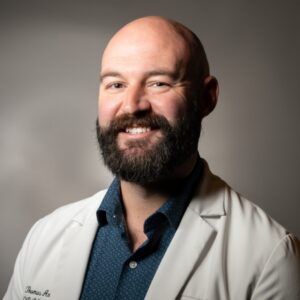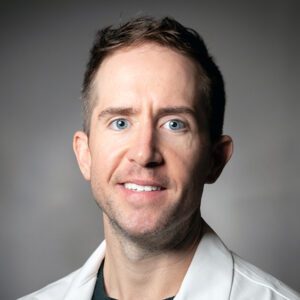To schedule an appointment in our Dry Eye Clinic, contact our Commonwealth office by calling (617) 262-2020. Please note that ophthalmology records and/or pertinent medical examination and rehabilitation records are required for scheduling an initial dry eye consult. Please have your doctor fax records from a recent eye exam to (617) 236-6323.
NECO Center for Eye Care addresses ocular surface disease and dry eye through a comprehensive approach, including identifying the underlying causes and providing personalized treatment plans. Our doctors are committed to staying at the forefront of new treatment strategies for patients with ocular surface disease or dry eye. Staying current on ocular surface disease is essential as our doctors also provide dry eye lecturing and teaching to NECO students throughout their education.

Ocular surface disease is one of the most common reasons patients schedule an eye examination. Symptoms associated with ocular surface disease include a foreign body sensation, tearing, burning, blurred vision, and itching. The cause of ocular surface disease can be multifactorial, requiring an individualized treatment approach for each patient. A part of your evaluation includes a better understanding of your systemic and ocular health, as specific conditions can also contribute to ocular surface disease.
The tear layer of your eye is critical to eye health and provides a constant lubricating film to help keep the eye’s surface smooth and clear. Each component of our tear layer is essential for healthy vision and eyes. When ocular surface disease is left untreated, a poor or inadequate tear layer can damage the cornea. Doctors at NECO Center for Eye Care evaluate each layer of a patient’s tear film to ensure proper structure and function and employ various treatments for ocular surface disease.
Treatments may include artificial tears, prescription eye drops, punctal plugs to conserve tears, and recommendations for lifestyle changes to manage symptoms. We also offer advanced in-office treatments like iLUX® thermal Meibomian Gland expression and Intense Pulsed Light (IPL) for ocular surface inflammation.
How is dry eye diagnosed?
Your optometrist will use a combination of examination techniques, diagnostic imaging, a detailed history of your condition, and a review of your medications and lifestyle to determine factors that can contribute to dry eyes.
You may be more at risk of dry eye if you:
- Work in a setting that requires heavy use of digital screens
- Wear contact lenses
- Experience seasonal or chronic allergies
- Were assigned female at birth
- Are older than 50 years of age
- Are taking certain medications that may impact tear production
- Have known issues with the structure of your eyelid
- Have certain autoimmune conditions such as rheumatoid arthritis
- Have had or plan to have eye surgery such as refractive (LASIK) or cataract surgery
Dry eye is a common and chronic condition that has become increasingly prevalent with the rise of digital device use. Our dedicated team of optometrists offers a variety of treatments for dry eye relief. Whether you experience occasional dryness or deal with it daily, our doctors will screen for this condition as part of your routine eye care and may recommend that you schedule a more in-depth evaluation at our clinic.
What causes a dry eye condition?
Dry eye is a chronic condition that occurs when the tear layer that protects the front surface of the eye is compromised. This condition often results from decreased tear production, increased tear evaporation, or an imbalance in tear composition, which can result from age, genetics, screen use, or a number of other factors.
Decreased tear production Your tear production may naturally decrease as you age, leading to dry eyes. Other causes include:
Your tear production may naturally decrease as you age, leading to dry eyes. Other causes include:
- Regularly staring at a computer screen (computer vision)
- Chronic diseases such as diabetes and rheumatoid arthritis
- Laser eye surgery
- Contact lens use
- Endocrine disorders such as thyroid disease
Certain medications, especially allergy medications and decongestants, can also decrease tear production. As part of your Dry Eye Consultation, your NECO Center for Eye Care optometrist will review your medications to determine if they contribute to dry eye symptoms.
Increased tear evaporation
Increased tear evaporation means you have enough tears, but they don’t adequately lubricate your eyes. This can be caused by:
- Wind, pollution, or dry air
- Blinking less often
- Dysfunction of the glands that protect the tear layer
Environmental factors such as air conditioning or working outdoors, as well as colder, dryer air in the winter, can contribute to increased tear evaporation. At NECO Center for Eye Care, your optometrist will utilize the latest diagnostic imaging to determine if these factors play a role in your dry eye symptoms.
Imbalance in tear composition
The tear layer that protects the front surface of your eye contains a water and oil layer that helps to prevent evaporation. If the o glands that produce this oil (meibomian glands) become clogged, your tears might lack sufficient oil to lubricate your eyes properly. Your optometrist can often identify and correct the underlying issue to help you produce healthy tears.
Should I be concerned about dry eyes?
Untreated dry eyes can lead to more than just discomfort. Complications include:
- Increased risk of eye infections and inflammation
- Long-term damage to the surface of your eye due to chronic inflammation
- Difficulty seeing and performing everyday tasks, particularly worse at the end of the day
- Discomfort wearing contact lenses or using digital devices due to dryness
Dry eye treatments
Because there are many causes of dry eye, our optometrists can create a sophisticated and personalized treatment plan that may include:
- Thorough evaluation by eye doctors who specialize in the diagnosis and treatment of ocular surface disease and dry eye
- Topical treatments, including prescription eye drops
- Co-management of dry eye with your regular eye doctor
- Nutrition or lifestyle consultation to aid in natural meibum production or reduce inflammation
- Advanced diagnostic imaging for a detailed evaluation of the meibomian glands, which produce oil to help stabilize your tear layer
- Thermal pulsation and expression of these glands using iLUX® technology
- Intense pulsed light (IPL) to treat underlying inflammation of the eyes and eyelids
Your optometrist will work with you to create a customized treatment plan for your dry eye condition. We aim to provide lasting symptom relief, and that begins with a dry eye consultation.





